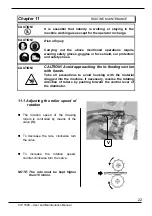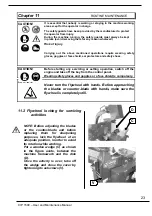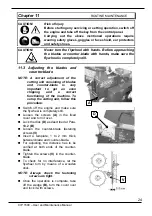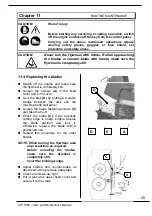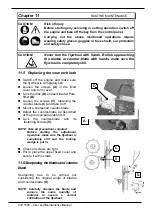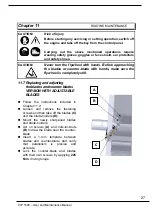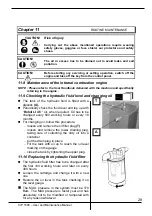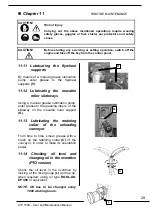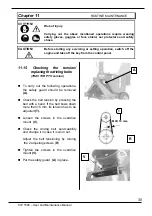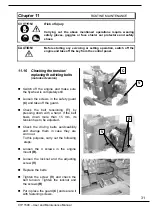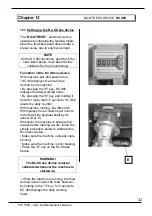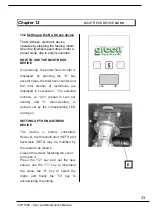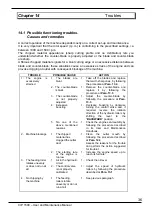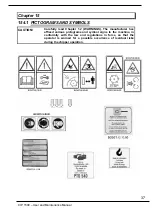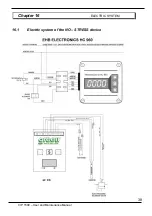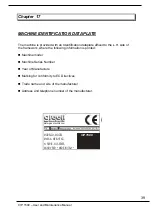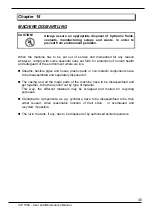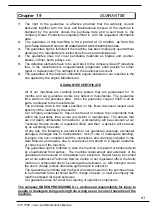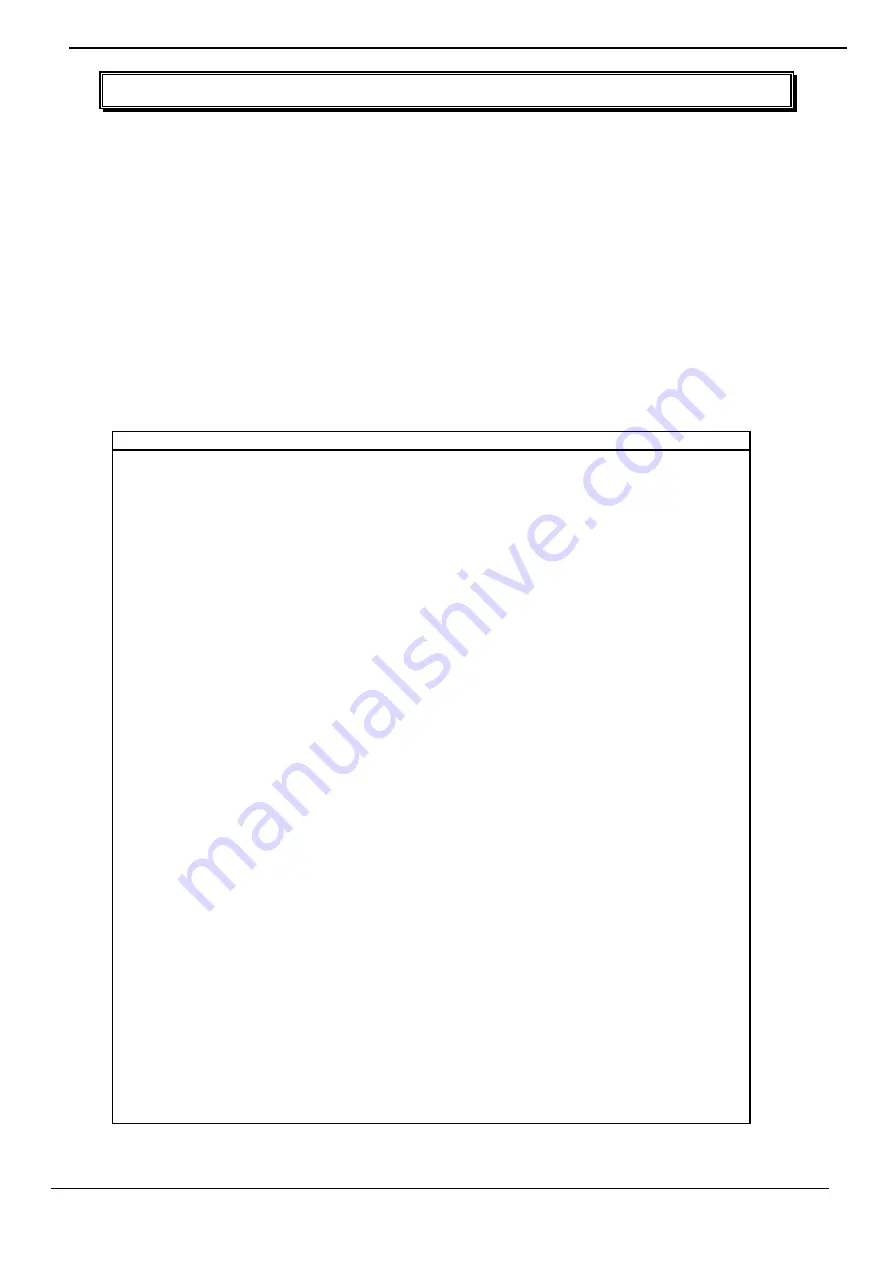
CIP 1500 – User and Maintenance Manual
36
Chapter 14
Troubles
14.1 Possible functioning troubles.
Causes and remedies
A correct operation of the machine depends mostly on a correct set-up and maintenance.
It is very important that the rotor speed (r.p.m.) is conforming to the prescribed settings, i.e.
between 1000 and 1500 r.p.m.
The chipped material appearance (sharp cutting profile and no defibration) lets you
understand whether the counter-blade is properly adjusted or the blade and counter-blade
are sharp.
A fibrous chopped material signals for a blunt cutting edge or an excessive distance between
blade and counter-blade; these situations cause an excessive stress of the engine and can
provoke clogging at outlet with consequent blockage of the machine.
TROUBLE POSSIBLE
CAUSE
ACTION
1. The engine is
excessively
strained
1. The blades are
blunt
1. Take off the blades and replace
them with sharp ones, by following
the procedure at
Para. 13.4
2.
The
counter-blade
is blunt
1. Remove the counter-blade and
replace it by following the
procedure at
Para. 13.5
3.
The
counter-blade
is not properly
adjusted
1. Adjust the counter-blade by
following the procedure at
Para.
13.3
4.
Excessive
boosting
1. Decrease boosting by clockwise
turning the control valve and, if
required, reverse the rotation
direction of the hydraulic rollers by
shifting the lever to the
“
BACKWARD
“ position
5. No one of the
above mentioned
reasons
1. Check the engine serviceability by
following the procedure described
in its User and Maintenance
Handbook.
2. Machine
blockage 1. The
chipped
material has
clogged the outlet
duct
1. Clean the outlet mouth by
following the procedure described
at
Para.
12.3
Assess the reasons for the trouble
and perform the action suggested
for trouble 1.
2. The starting rate
of the engine is
too low
1. Increase the engine speed up to
reach its full rate.
3. The feeding roller
rotates unevenly
or does not run at
all
1. Air in the hydraulic
circuit
2. The control valve
is not properly
calibrated
1. Check the oil level
1. Adjust the speed of hydraulic
rollers by following the procedure
described at
Para. 13.1
4. No chipping by
the machine
1. The
feeding
rollers rotate
unevenly or do not
run at all
1. See
previous
paragraph

